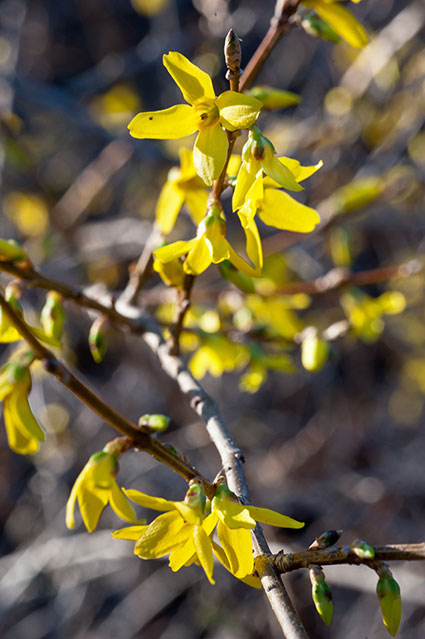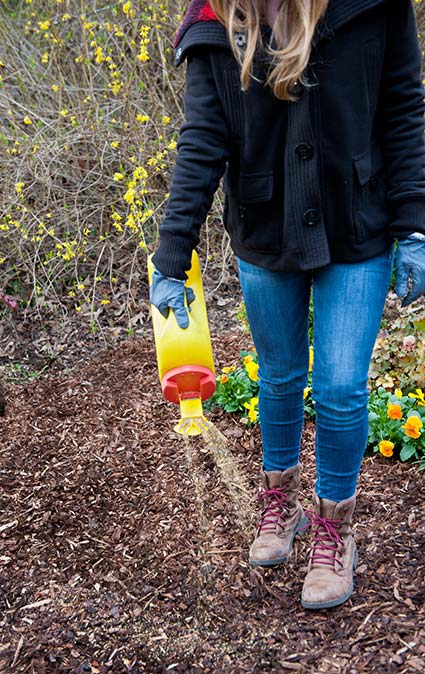Tired of Pulling Weeds? Prevent Them
Hate pulling weeds? This season, instead of having to waste time pulling weeds, prevent them! Try Preen Weed Preventers and free yourself from weeding.

The forsythia in bloom is the signal that the earliest-germinating weed seeds buried in garden soil are about to start growing. For gardeners-in-the-know, yellow buds on forsythia branches are a call to action: it's time to apply a pre-emergent garden weed preventer like Preen to stop weeds before they start growing.
When spring weather warms the top layer of soil to 55° F weed scientists know that conditions are right for two things to happen: forsythia reaches full bloom and crabgrass seeds begin their germination season.
Thus for gardeners-in-the-know, yellow buds on forsythia branches are a call to action: it's time to apply a pre-emergent garden weed preventer to stop the seeds of early-sprouting weeds like crabgrass, chickweed and others before forsythia reaches full bloom.
But the beginning of germination season is just that, the beginning. Different weeds’ seeds germinate at different times all season long, spring through fall. Early prevention is optimal, but anytime can be an effective time to begin a weed prevention routine.
For gardeners wishing to minimize hours lost to weeding, here are some tips for getting ahead, and staying ahead, of troublesome garden weeds.
Mulch and pre-emergent weed preventers don’t kill weeds. They prevent weed seeds from sprouting. So, first, any existing weeds must be removed. Manual weeding is the safest and surest method. It’s especially important to remove weeds, roots and all. And definitely don’t ever let them gain size and go to seed!
Mulch is an important and effective weed-fighting tool. Mulch deprives weed seeds from the light they need to sprout. A two- to three-inch layer of mulch goes a long way toward preventing garden weeds.

Apply Preen when forsythia blooms
Using a pre-emergent weed preventer such as Preen combined with mulch offers a one-two punch against weeds. Just sprinkle the granules on top of the mulch. Together they can stop weeds for up to three to four months, working on seeds in the top layer of soil or mulch, plus those carried in by the wind, birds or animals. An additional application in mid-summer will protect against late summer- and fall-sprouting weed seeds.
After applying a garden weed preventer, water with a hose or sprinkler to activate it. Once activated, a product like Preen bonds with the soil, creating an invisible weed-control barrier that stops seeds from rooting by interrupting cell replication in their initial root hairs. It won’t build up in the soil, wash away or leach into ground water. Within six months to a year or so the active ingredient is broken down by soil microbes and is no longer active. There’s also a special weed-suppressing Preen mulch with weed preventers already mixed in that protects against weeds for up to 6 months.
As with all garden products it’s important to read and follow the directions on the label. Following a simple weed prevention routine makes it possible to minimize many weed problems before they ever happen.